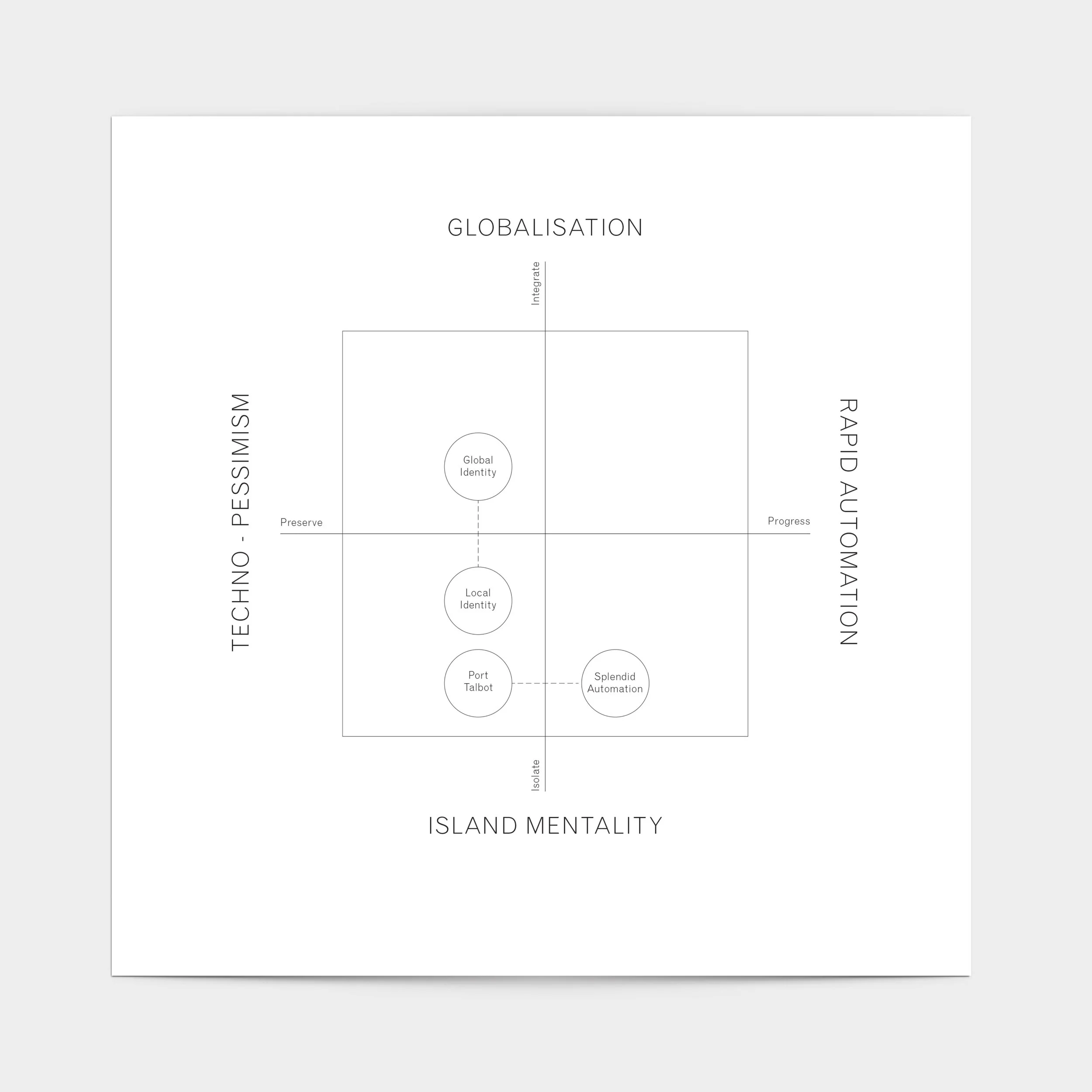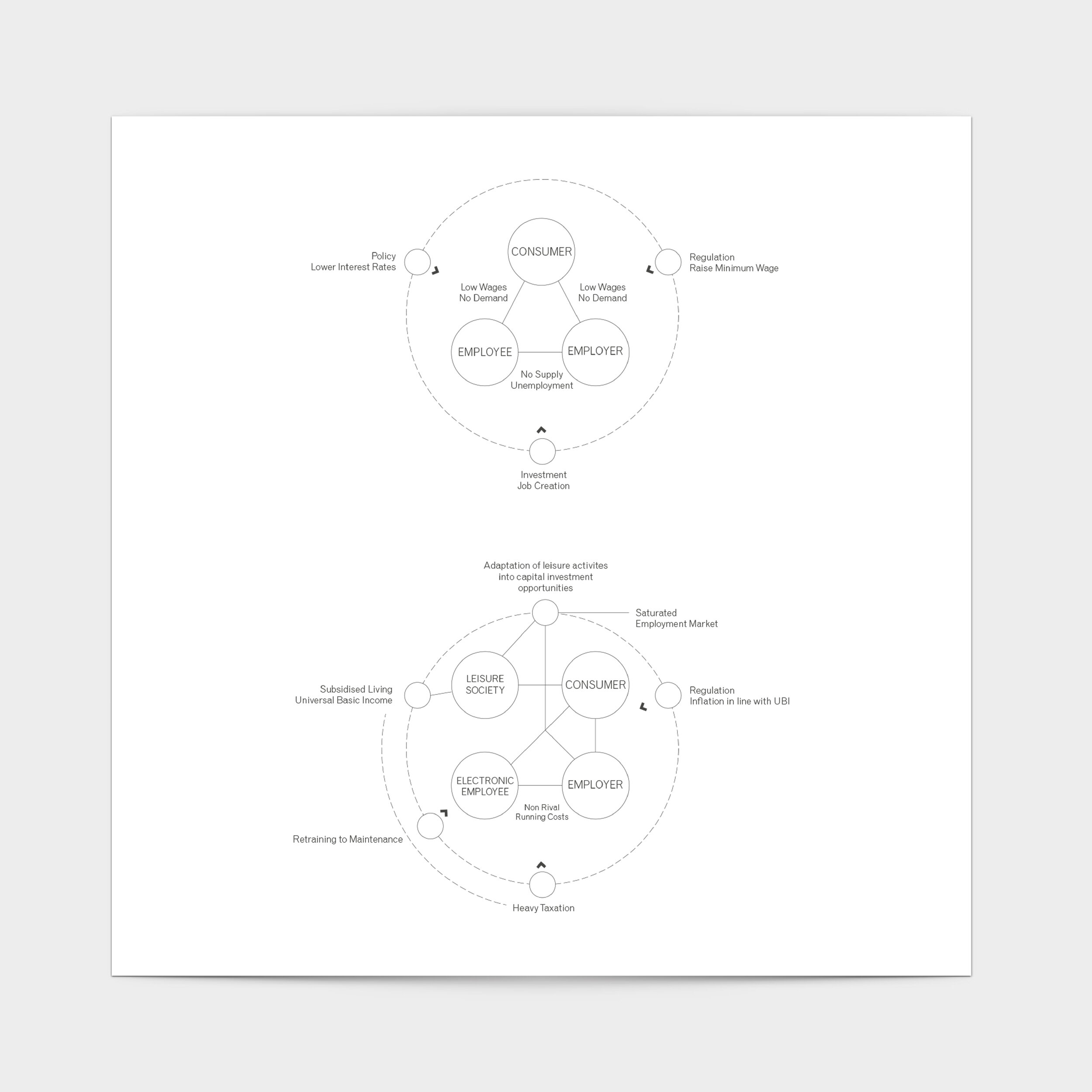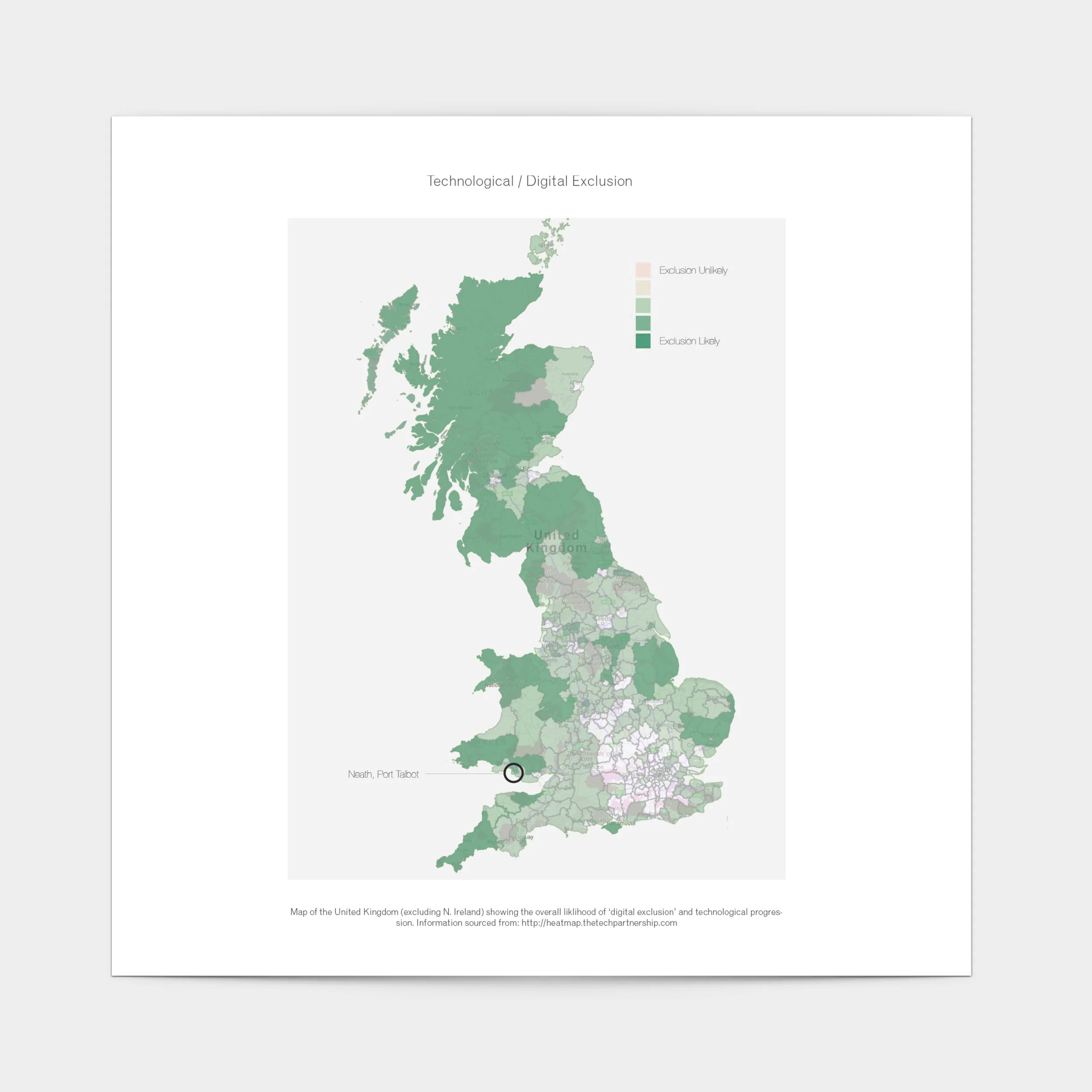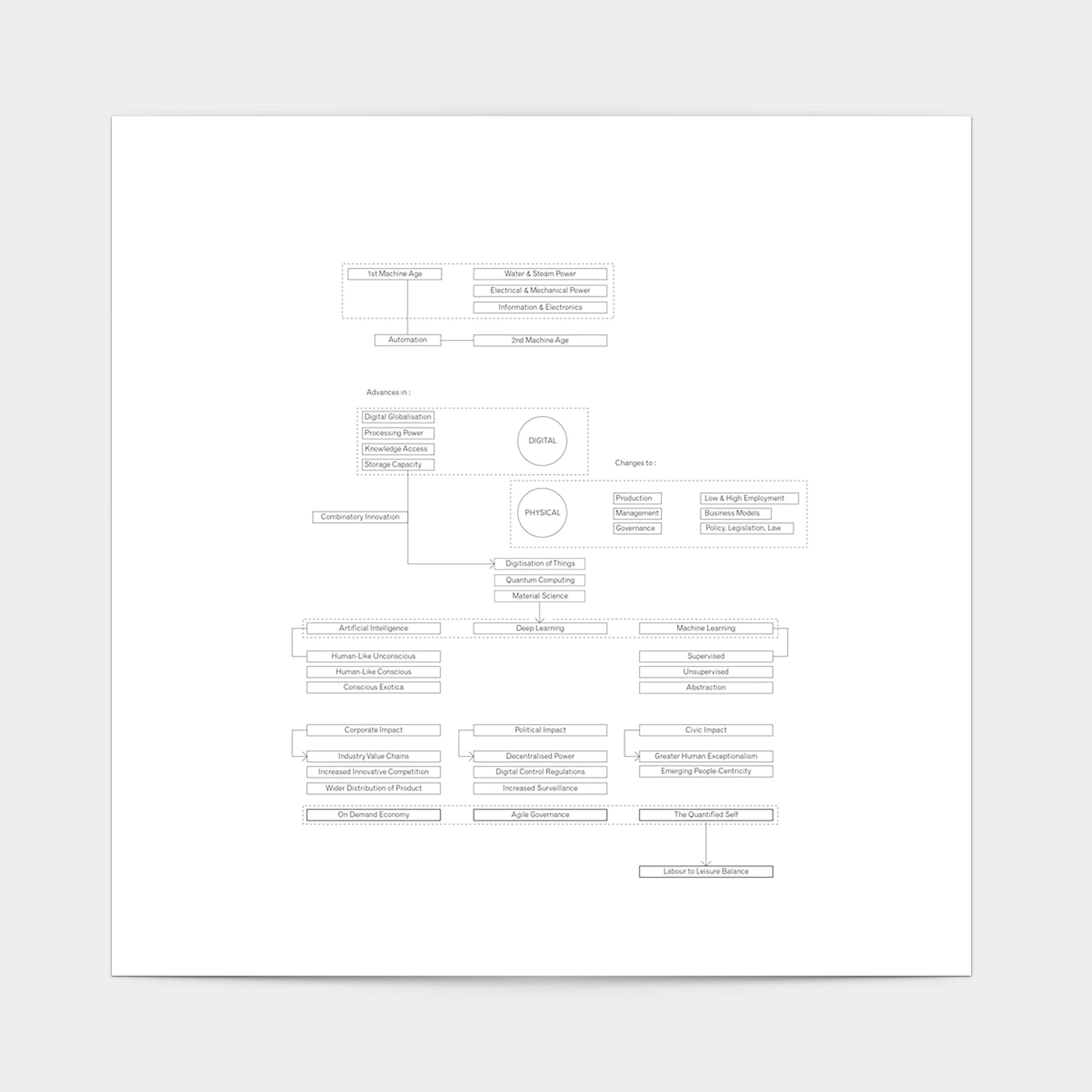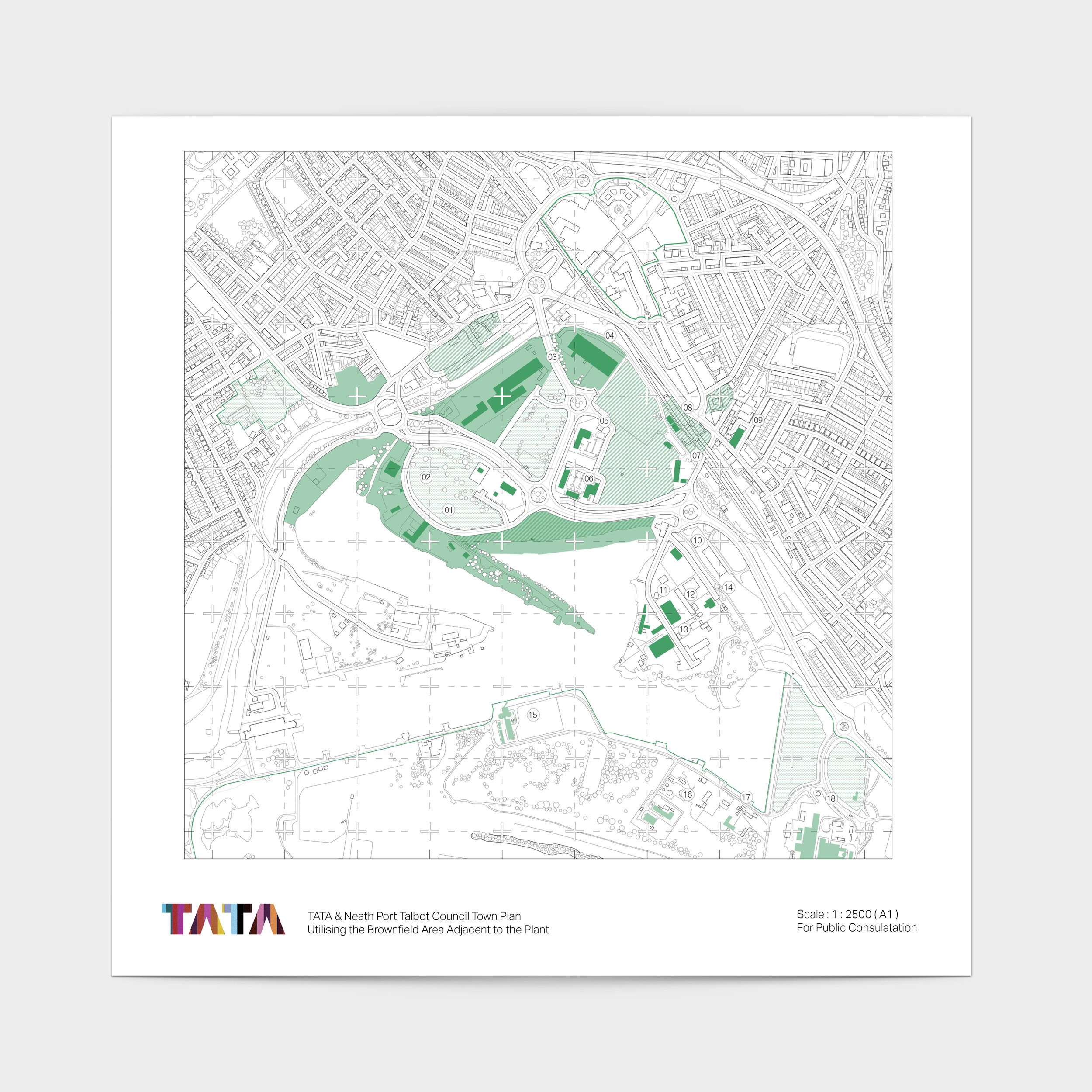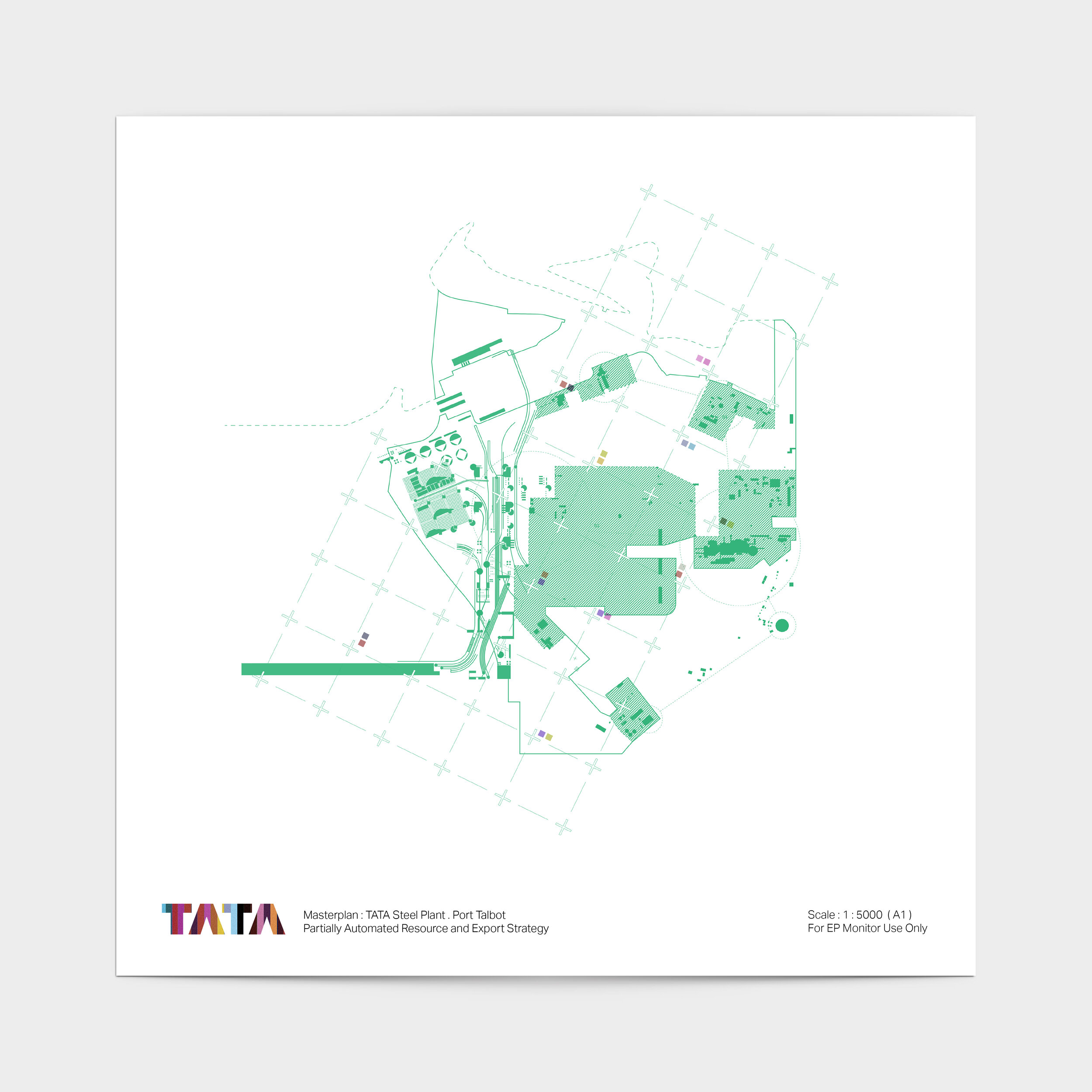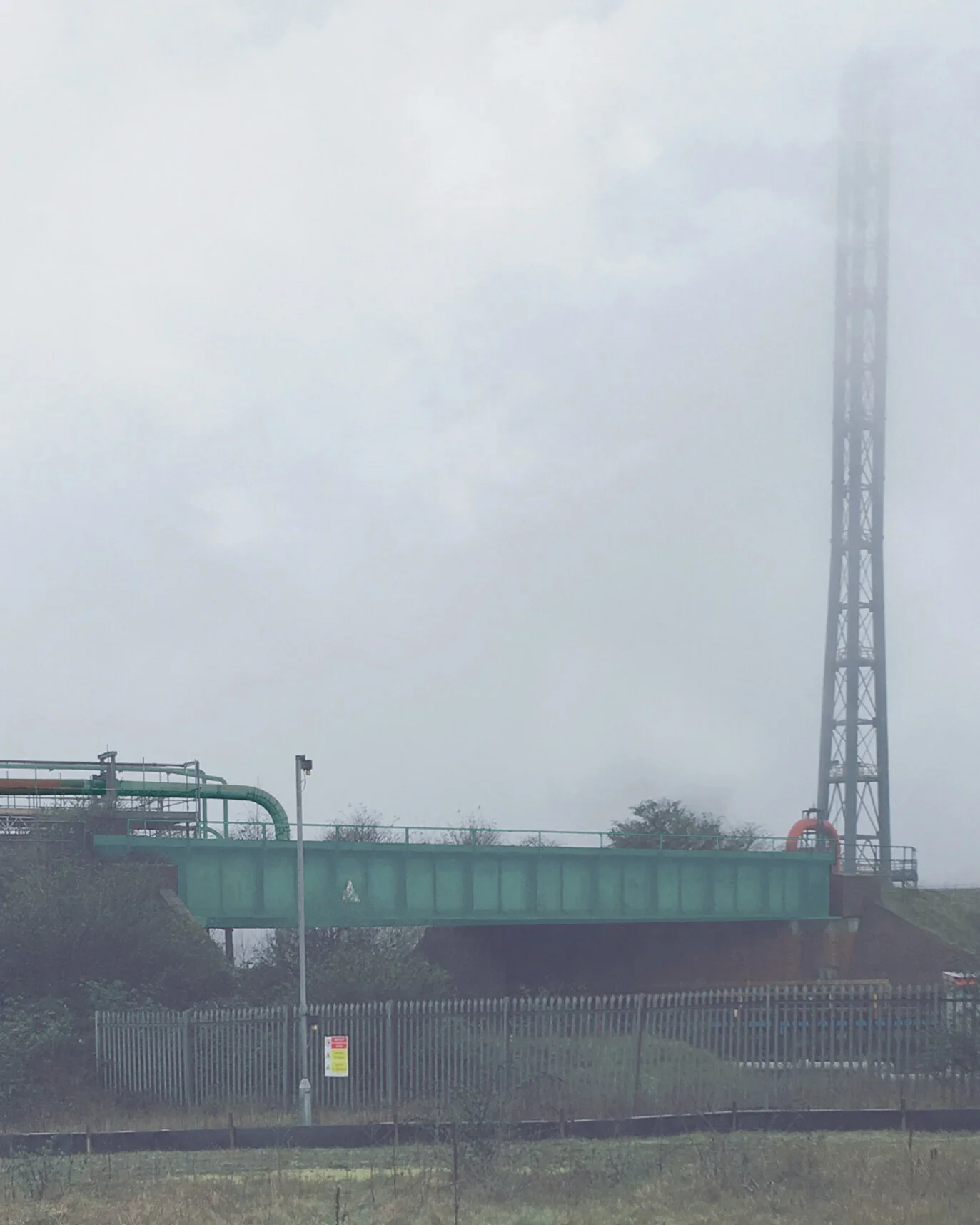SPLENDID AUTOMATION !
ADS 4 - Tom Greenall, Nicola Koller & Rosy Head
The term ‘technological unemployment’ dominates discussions on future thinking. It is argued that we stand on the cusp of an era whereby automation will supplant both high and low-value workforces alike. This has resulted in a plethora of apprehensive futures to arise that project drastic changes to governmental policy, economical structures and notions of value and identity within work. Yet while these depict technological hegemony at a global scale, our political climate indicates a more enigmatic future. Events like ‘Brexit’, coupled with national shifts towards isolationist policy suggest a desire to preserve as opposed to progress. A paradox between technological advancement and socio-political trends emerges. This anxiety highlights the need to address tensions between humans and automation within the workplace and beyond. With our perception of identity so closely linked to the value we place on ‘career’, the potential for social crisis is substantial. What role can architecture play in preserving, indeed progressing identity within a transitioning automated society? It is plausible to look to design to mediate the conflicts of this dichotomy?
This thesis seeks to utilise design as a critical tool through which a speculative near future (or alternative now) provides a glimpse into how we could embark on our journey into a fully automated society. Port Talbot in Wales provides an archetypal example of an urban scenario through which the products of labour provide the backbone of identity for the community. Throughout the town’s history, the welfare of the community has consistently relied upon the state of industry. This reliance has resulted in the success of Tata Steel production forming a directly proportional relationship to the quality of life in the town- if the jobs go, the town falls.
Port Talbot held one of the highest percentage of ‘Vote Leave’ results for any constituency in the United Kingdom with a number of local opinion polls citing a move to nationalise the steel industry and provide security around the single highest employment opportunity in the area as a key driving factor in this result. The town also finished in the lowest 10% of a recent 10 year statistical addendum seeking to gauge the rate of technological progression within the United Kingdom. Within the study, Port Talbot was found to have one of the lowest ‘technologically able’ populations and one of the least interested in technological progression based on opinion polls from 2016. Both sets of data lean towards the techno-pessimistic and isolationist ends of the spectrum and a championing of local identity.
The scheme portrays a future scenario for Port Talbot, through the lens of an increasingly automated steel industry. Set within a post-Brexit, automated society, Tata’s influence over the town is furthered by an assertive expansion scheme looking to increase throughput by automating front and back ends of the production line. With British Steel experiencing an automated boom, Port Talbot is pulled along with it. However the boom does not, like in historical examples, equate to employment satisfaction in the community. With the success of the town now relying on the level and efficiency of ‘electronic persons’ a new balance is created between those that still work and their new employees. Furthermore, Tata’s expansion has left a lasting effect on the town’s built environment : the town has always served those who serve the steel plant, and thus small ‘infiltrations’ of electronic presence begin to seep into the everyday. Road Signs, Traffic Lights and street scapes at first accommodate and then priorities automation’s influence on the town. The M1 that cuts through the heart of the town and who’s own history is filled with human disruption and displacement begins to champion the driverless trucks servicing the TATA’s steel plant. Ultimately the project seeks to address the notion of an automated workforce on the identity of a town who’s own identity is so closely linked to their employment. It looks to focus on the tensions and architectural nuances that arise in this intermediate stage between a fully automated society and asks what architecture can tell us about the power balances in such a precarious scenario.
In order to accommodate the influx of electronic persons that begin to inhabit workforces across the United Kingdom, UK Parliament implement the creation of a new electable institution as well as a new Minister for Technology to sit on the cabinet. The new British Institution of Technology is tasked with implementing and drafting new laws to accomodate automation. The draft created is based on the EU’s own preparations for the future of automation but takes into consideration the political climate of a post Brexit United Kingdom, prioritising British values and interests above that on the continent. In order to tackle the widening gap in law surrounding the rights and key moral issues of electronic persons, 10 articles are drawn up to outline the principle political agenda of Britain. These primarily set out new legislation but also highlight changes to current laws surrounding citizenship, intellectual property, liability and insurance. These articles, while initially focused on dictating a passage through the unprecedented future of an automated Britain, also lay down precedent and example for electronic engagement with humans. Yet more critically, propose how a post-Brexit Britain could position itself upon an automated global platform. The platform is set up to ensure that British Automation remains at the forefront of advances in technology while still remaining inherently British. In order to achieve this, an identity has to form around the appearance and interaction of UK EP’s (electronic persons) and HC’s (human citizens). One which creates a working relationship but doesn’t forget who is in charge.
With the influx of new electronic workers into Port Talbot comes the task of integrating and replacing the existing workforce. One technique adopted by TATA is to pitch the electronic persons within their intellectual property remit in a ‘uniform’. This immediately complies with the BIT regulations on the distinct features of electronic persons being recognisable to human colleagues while also providing the potential to socially ease the replacement process. With this in mind, TATA’s EP designers focus on the creation of an object that appears as unthreatening to the current workforce as possible. Firstly, the individualism and unique features commonly associated with humans is ‘de-resolutionised’ to include less polygons and make all features, while still recognisable as ‘human’ indistinguishable. This immediately gives the replaced worker as a sense of individuality unbeknown to the EP. Secondly, a uniform colour is extended to the workers. Green screen green is selected to allow the electronic persons to express individualism amongst one another by altering and adapting what is seen digitally, while human colleagues are capable of maintaining the green analogue uniform. Thirdly, in 2017, the work force of TATA Steel in Port Talbot boasted a male to female ratio of 5 : 1. In order to avoid alienating these replaced workers a non descript female form is selected as the base of all design models. These design criteria are implemented to help integrate the electronic persons as a beneficial additions as opposed to the reality of a more efficient and cheaper source of labour.
The project centres upon two key design strategies. Firstly, the automated expansion of Tata, through the design of a new Importation Pier and Slag Export facility and secondly, the repositioning and bolstering of Port Talbot FC’s football stadium. The expanded pier, indicated in the masterplan on the adjacent page number 1. is constructed in a method similar to the creation of fully automated warehouses beginning to emerge across the globe. It breeds a new typology in architecture. Architecture for noone (or electronics alone). The slag export facility offers a new form of revenue for TATA to exploit and for the town enjoy.
With the facilitation of automation and community identity integral to design moves both Tata and the Council make, the two strategies begin to merge and formulate a physical structure through which issues of work, leisure and heritage begin to formulate a new typology for the town of Port Talbot – one which provides social structures and amenities for the community whilst enabling the new automated processes behind Tata’s growth. Through the distilment of programme, the boundaries of work, spectatorship and leisure are blurred and the preconceptions of technological unemployment reimagined.

